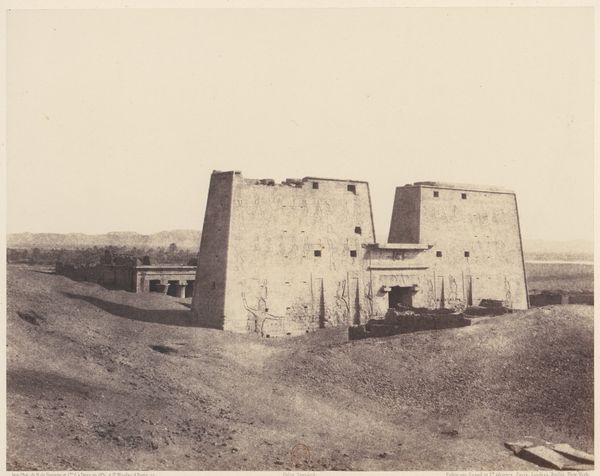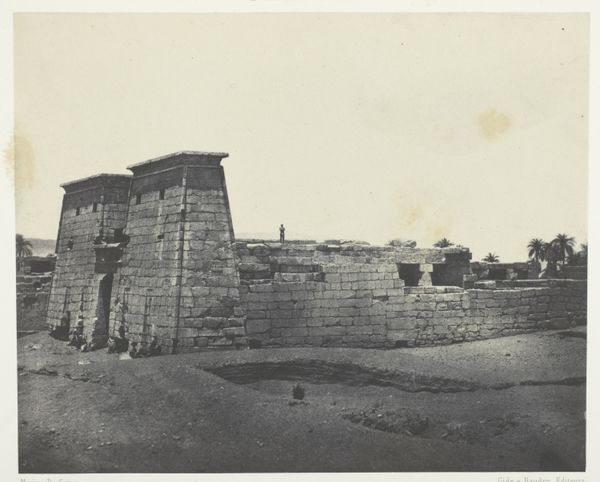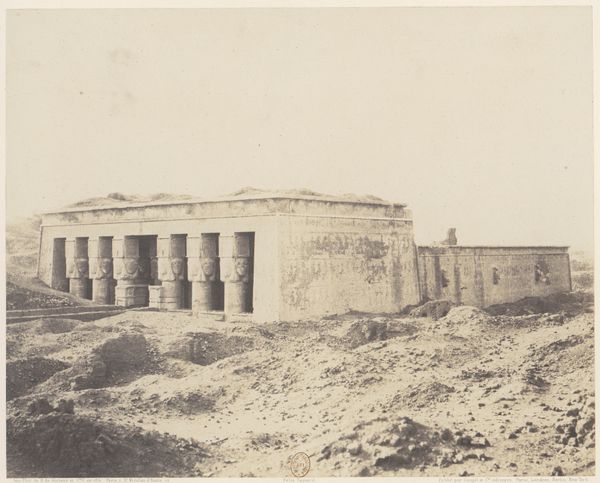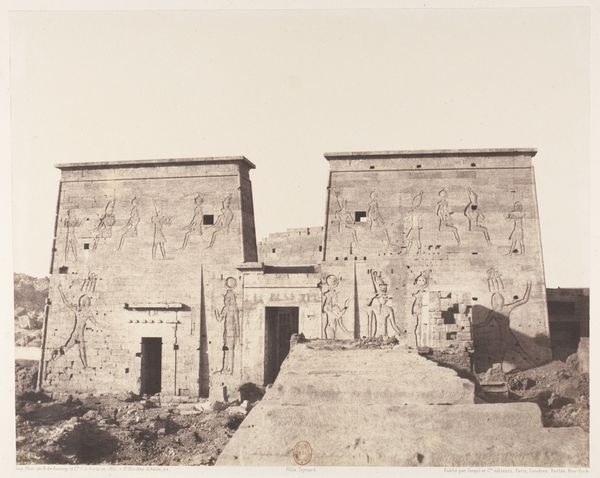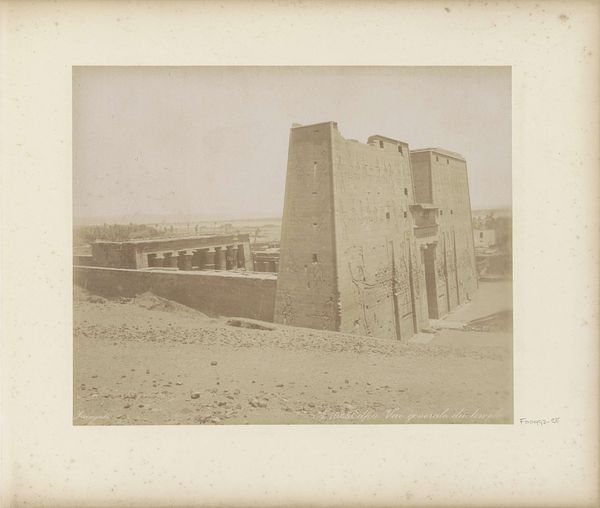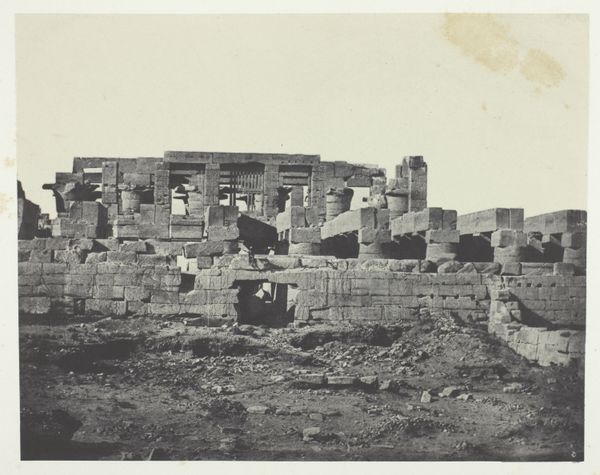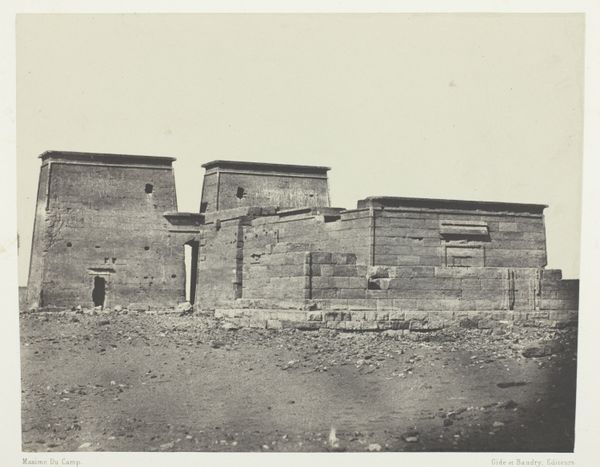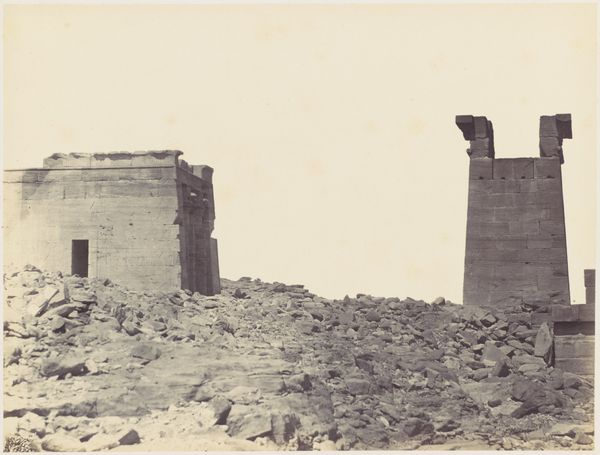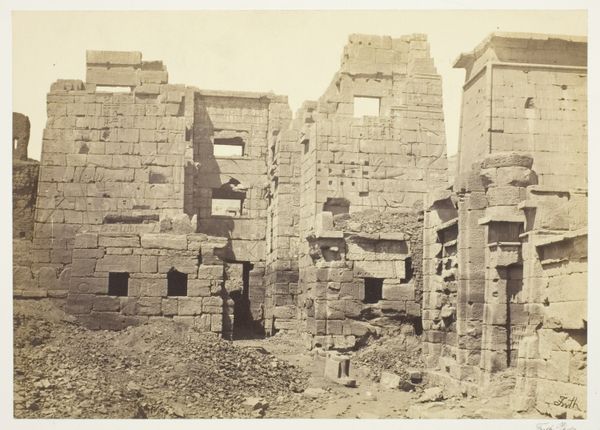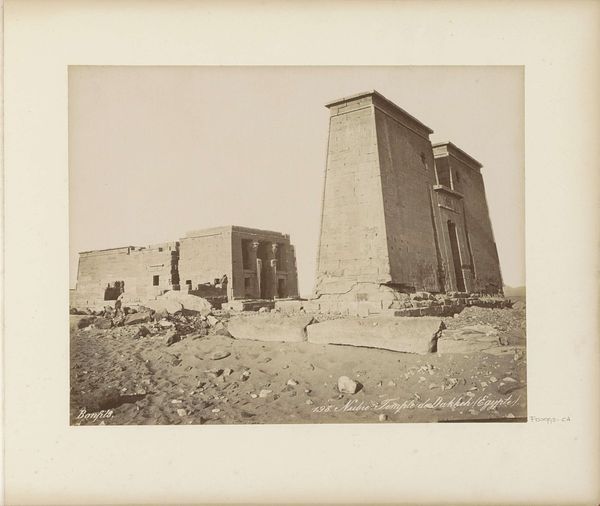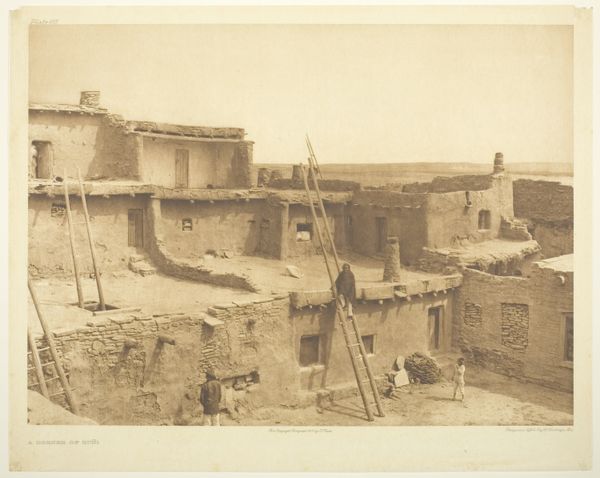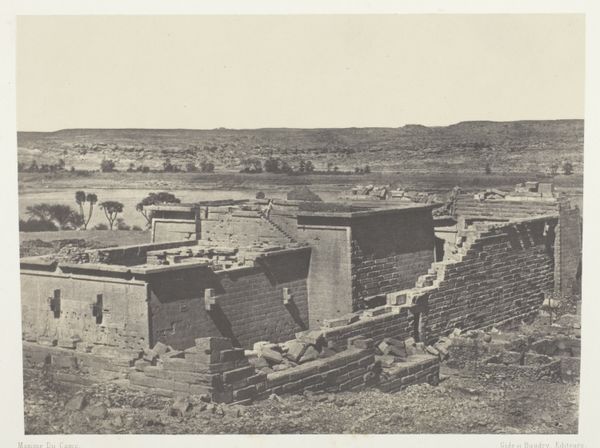
photography, gelatin-silver-print, architecture
#
print photography
#
landscape
#
ancient-egyptian-art
#
outdoor photo
#
photography
#
natural colour palette
#
egypt
#
orientalism
#
gelatin-silver-print
#
history-painting
#
architecture
#
realism
Dimensions: 16.2 × 22.5 cm (image/paper); 29.7 × 42.7 cm (album paper)
Copyright: Public Domain
Curator: This gelatin-silver print from 1857 by Francis Frith captures "The Great Pylon at Edfou, Upper Egypt." The print offers a frontal view of the immense pylon, dominating the landscape and figures. Editor: Monumental. That's the word that leaps to mind. And imposing. Look at the scale; the figures at the base are dwarfed, rendered almost insignificant by the sheer mass of stone. Curator: Frith's photographic expeditions to Egypt occurred at a time when there was significant colonial interest. His photographs contributed to and reinforced Western perceptions of the region. Editor: And these glyphs carved on the walls...They're a complex language unto themselves. They hint at stories, rituals, a whole worldview rendered in visual form, repeating patterns representing ancient memories. What narratives might we find locked inside those carved figures? Curator: Orientalism plays a key role, with his perspective being aligned to history-painting of that period, even while striving for Realism in his approach and depictions. But also documenting for the modern age. The images reinforced ideas of Egyptian culture as an object of fascination and study. This contrasts to when it was a dynamic culture and an influential socio-political force. Editor: Absolutely. But what is especially fascinating here, is the pylon's structure; that double-towered gate-like structure held powerful symbolic weight, marking a threshold to sacred space, a portal into the realms of the gods. Notice its monumental features and details? They offer a powerful insight into Egyptian religion and kingship and a sense of timeless continuity. Curator: These photographs made this continuity accessible to Western audiences in unprecedented ways, influencing popular ideas of Egypt in that era. It's a complicated legacy—bridging documentation, art, and the politics of representation. Editor: Exactly, they let us look beyond the surface, searching for enduring echoes that inform our understanding of time, belief, and the human spirit. I look again at those figures…I sense in those walls and the symbolic inscriptions of gods and rulers—it makes the past strangely tangible. Curator: Precisely. And to understand it and its continued resonance is critical.
Comments
No comments
Be the first to comment and join the conversation on the ultimate creative platform.
